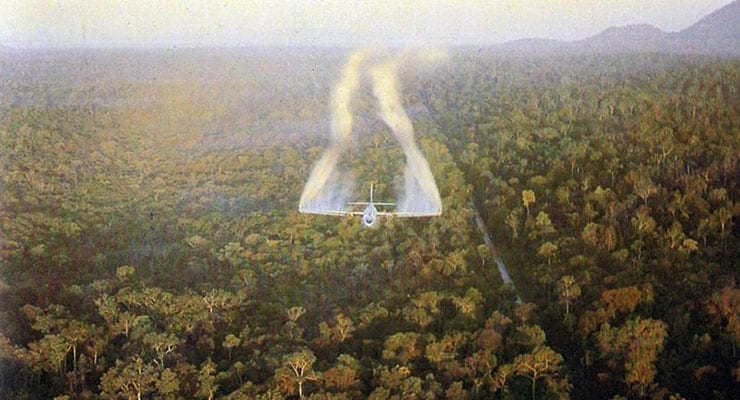
A new report from the Institute of Medicine finds that Air Force personnel based in the U.S. who worked after the Vietnam War on aircraft used to spray Agent Orange could have been exposed to unhealthy levels of the herbicide.
After their use in Vietnam, 24 C-123 aircraft were added to the fleets of four U.S. Air Force reserve units for use in military airlifts and medical and cargo transport. From 1972 to 1982, approximately 1,500 to 2,100 U.S. Air Force Reserve personnel trained and worked aboard these C-123 aircraft.
The reservists who served in the contaminated C-123s experienced some degree of exposure to the toxic chemical component of Agent Orange known as TCDD (2,3,7,8-tetrachlorodibenzo-p-dioxin), and it is plausible that the reservists exceeded exposure guidelines for workers in enclosed settings.
Exposed Veterans Denied Benefits
After becoming aware that these aircraft had previously sprayed Agent Orange, some Air Force Reservists applied to the U.S. Department of Veterans Affairs for compensatory coverage under the Agent Orange Act of 1991 (AO Act), which provides health care and disability coverage for health conditions that have been deemed presumptively service-related and due to herbicide exposure during the Vietnam War.
The VA denied the applications on the basis that these reservists were ineligible, because without “boots on the ground” service in Vietnam, they were not covered under the AO Act.
Armed with the knowledge that some air and surface samples from the C-123s taken between 1979 and 2009 showed the presence of Agent Orange residues, representatives of the C-123 Veterans Association began an effort to reverse the VA’s position and obtain coverage.
The VA asked the IOM to evaluate whether working in the C-123s could have plausibly resulted in exposures detrimental to the health of the Air Force reservists. The IOM was not directed to make any policy determinations concerning the applicability of the AO Act to the group.

Investigation Confirms Some Level of Exposure
The committee that carried out the study and wrote the report examined the results of air and surface sampling for TCDD and herbicides conducted between 1979 and 2009 in three C-123 aircraft and only herbicide results from an additional 10 C-123s.
The committee determined that the length of time between the spraying in Vietnam and the TCDD sampling, few sampling data, and minimal information about the reservists’ activities on the airplanes made it impossible to accurately estimate the level of TCDD exposure the reservists had experienced.
However, because TCDD residues had been detected on interior surfaces of the aircraft, the committee stated with confidence that the reservists were exposed to TCDD to some extent when working in the C-123s.
All the relevant samples, which were collected many years after the reservists worked in the planes, fall in or above the range specified as meriting cautionary consideration by international exposure guidelines. Therefore, the committee found it plausible that some of the reservists had problematic increases in their risks of experiencing a variety of adverse health outcomes.
“Detection of TCDD so long after the Air Force reservists worked in the aircraft means that the levels at the time of their exposure would have been at least as high as the taken measurements, and quite possibly, considerably higher,” said committee chair Robert Herrick, a senior lecturer on occupational hygiene at the Harvard School of Public Health in Cambridge, Mass.
The committee noted that efforts to recover work records concerning the reservists’ use of C-123s have been unsuccessful. Therefore, it is unlikely that any additional information will be become available to establish more definitively the magnitude of exposures experienced by the reservists.
Read the report: Post-Vietnam Dioxin Exposure in Agent Orange–Contaminated C-123 Aircraft.
Images courtesy of the National Museum of the U.S. Air Force

